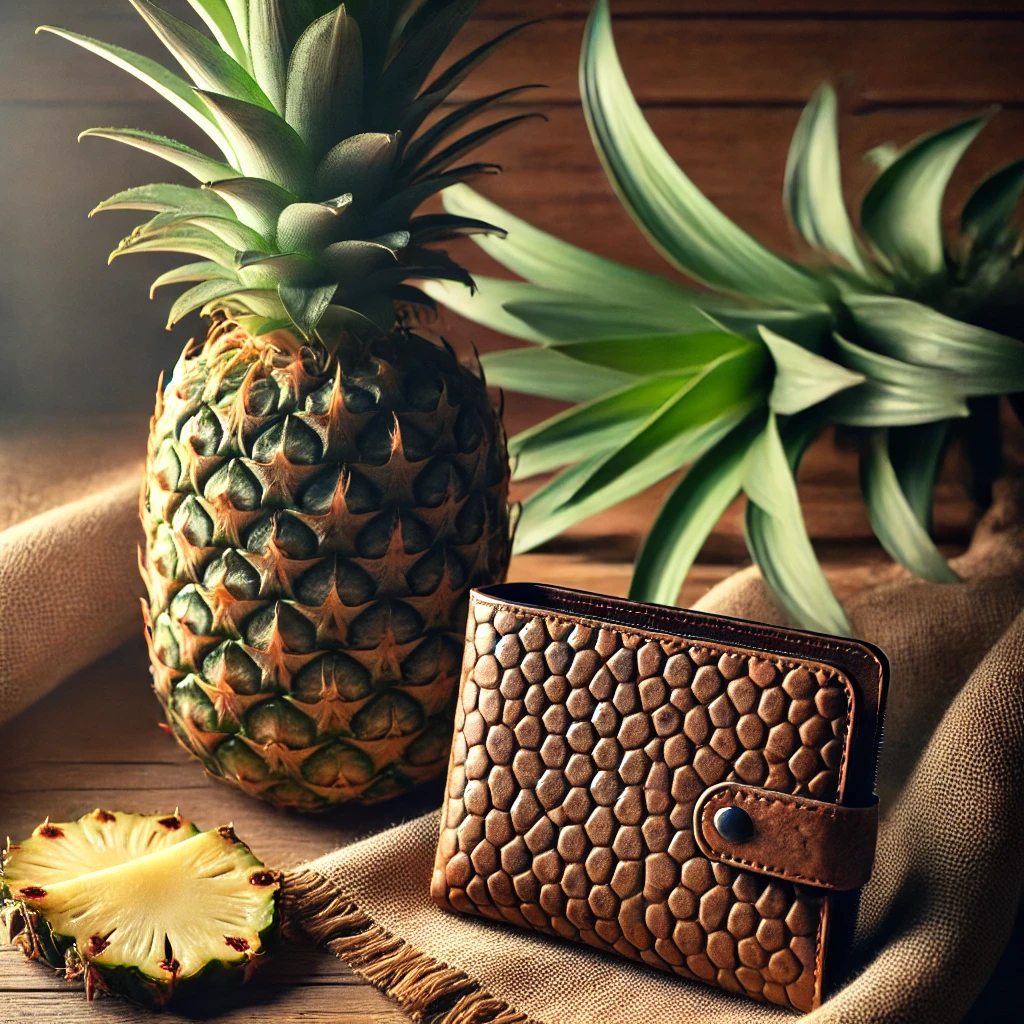
Pineapple leather, or Piñatex, is a revolutionary material offering a sustainable alternative to animal leather. Made from the fibres of pineapple leaves, this textile combines durability and versatility, making it a popular choice for eco-conscious consumers and brands. With the rise of sustainable fashion, Piñatex presents a unique way to reduce waste and create products that are both stylish and environmentally friendly. Here’s a comprehensive look at how pineapple leather is produced, its benefits, and its potential as a mainstream alternative.
What is Pineapple Leather?
Pineapple leather, known by the brand name Piñatex, is crafted from the fibres of pineapple leaves, a by-product of pineapple farming. This fabric is a prime example of “upcycling”—taking something that would otherwise be discarded and giving it a new purpose. The leaves, which are typically left to decompose, are collected, stripped of their fibres, and processed into a leather-like material. This innovative use of agricultural waste not only reduces environmental impact but also provides farmers with an additional source of income.
The Production Process of Piñatex
The production of Piñatex begins with the collection of pineapple leaves from farms, primarily in the Philippines. These leaves are subjected to a process called decortication, where fibres are extracted. After the fibres are stripped and washed, they are felted into a non-woven mesh, which serves as the base of Piñatex. This mesh is then sent to Spain for further treatment and colouring, resulting in a leather-like material that is flexible, lightweight, and durable. The entire process is less resource-intensive compared to animal leather, making Piñatex a more sustainable choice.
Benefits of Piñatex
Piñatex has several advantages that make it a viable leather substitute for various applications, from fashion to upholstery.
- Eco-Friendly: Piñatex production uses significantly fewer resources than traditional leather. It requires no additional land, water, or chemicals for growing the raw material, as it relies on by-products from pineapple farming.
- Animal-Free: For consumers committed to cruelty-free products, Piñatex provides a vegan alternative that doesn’t involve animal exploitation.
- Lightweight and Breathable: Piñatex is naturally lightweight, making it ideal for use in shoes, bags, and jackets. Its breathability also makes it comfortable to wear.
- Biodegradable Components: Unlike synthetic leathers made from petroleum-based plastics, Piñatex contains natural fibres, meaning it can decompose more easily than synthetic options.
- Economic Support for Farmers: By turning agricultural waste into a valuable resource, Piñatex production benefits pineapple farmers, creating an additional revenue stream without extra environmental costs.
Applications of Piñatex
Piñatex has been adopted by various brands in the fashion, accessory, and upholstery industries. Designers use it in shoes, bags, jackets, and upholstery items due to its flexibility and versatility. It is also becoming more popular in interior design for items like seat covers and cushions. With an increasing focus on sustainability, Piñatex appeals to brands and consumers alike who are looking for eco-friendly materials.
Challenges and Future Potential
While Piñatex is an excellent eco-friendly alternative, it is not without its challenges. Its durability, while strong, may not yet match that of high-quality animal leather. Additionally, as demand grows, so does the need to scale up production without compromising sustainability standards. Research is ongoing to enhance Piñatex’s durability and make the production process even more eco-efficient.
Conclusion
Piñatex is paving the way for more sustainable, ethical options in the fashion and design industries. Its use of pineapple leaves, an agricultural by-product, highlights the potential of upcycling in reducing environmental waste. While there are challenges to overcome, the growing adoption of Piñatex indicates that it could become a mainstay in sustainable manufacturing. For more information on sustainable materials, explore our eco-friendly fabrics blog, or read about the benefits of plant-based leathers.
This innovative material not only reduces waste but also supports local economies and provides consumers with a cruelty-free alternative, making it an important step forward in sustainable product design.
